How I spent a 18 hour layover in London, England
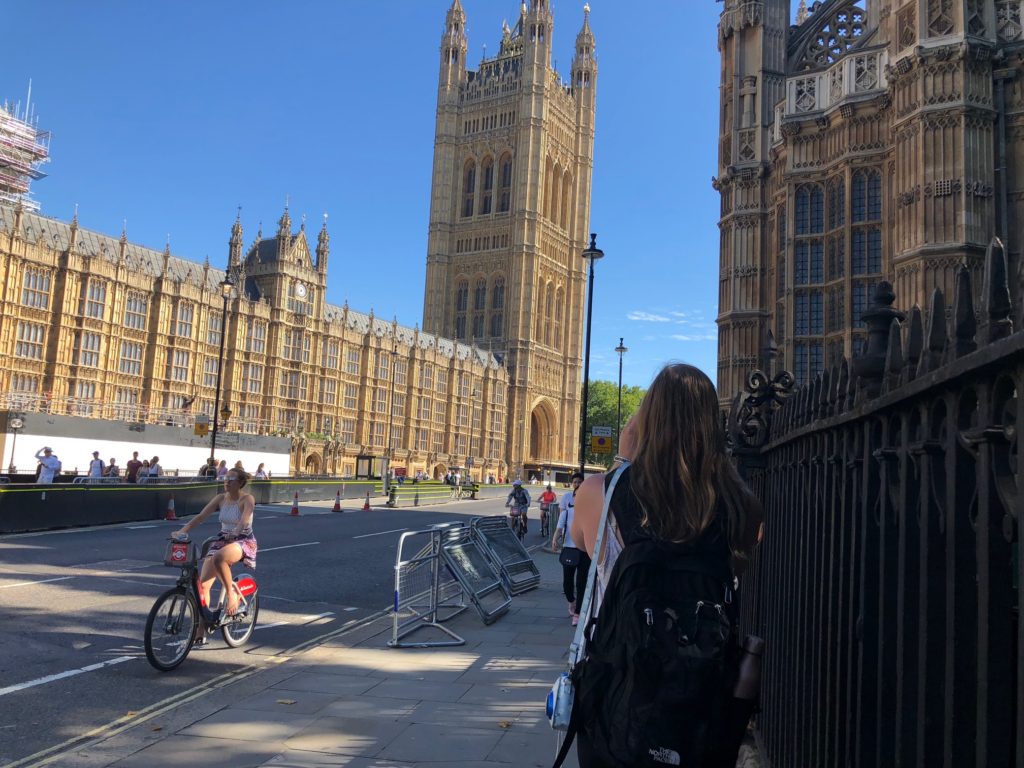
When looking at flights to take me to Madrid for the start of my teach abroad program, I saw a very cheap flight that had an extended layover in London. I saw a rare opportunity to see the city for no additional transportation costs.
This article may contain affiliate links through the Brevité and Amazon associate’s program. If you purchase an item using one of my links I will receive a small commission, with no extra cost to you.
If you are interested in the extended layover option be sure to check out a few crucial details before booking:
- Check that the majority of the layover hours are during the daytime.
- Which airport or airports your flights arrive to and depart from.
In our case, our flight arrived at Gatwick airport and departed from Stansted Airport. This means that we could not leave our baggage at the airport and had to transport it with us. Like most people, we did not want to bring our year’s worth of luggage with us all around the city. Our solution: Bagbnb: a website where you can organize secure bag storage for the duration of your stay. We dropped our bags at a location near Victoria Station (which is the major station in central London) and were luggage-free for the day!
- Bus tickets to return to the airport
I am very paranoid about missing flights so one thing I was sure to book before arriving in London was our bus tickets from Victoria Station (bus station) to Stansted airport. You can also buy them upon arrival at the station.
Pre-Arrival Research
I did tons of research before landing in London. We had limited time and there were so many things to do and see. I focused on self-guided walking tours that visited as many major sights as possible. The blog that helped me the most when planning was The Self Guided Walking Tour: History and Culture Itinerary by Solosophie. I referenced and adapted this Itinerary to fit what worked best for us.
London is relatively easy to navigate, but I would recommend downloading an offline map on google maps just in case. You can also pin and save the locations you want to visit.
Stop 1: Lunch

After we dropped our bags at the Bagbnb near Victoria Station, we set out to find a pub where we could eat an early lunch. We wandered around the quaint streets until we found a small local pub, The Constitution.
Here we ordered and enjoyed fish and chips and mapped out our stops for the day.
From The Constitution, we turned right onto the street and an immediate right onto the major street A3213. Continue on A3213 for several blocks. When you reach the intersection with A3214 turn right and follow this until it drops you at Buckingham Palace.
Stop 2: Buckingham Palace
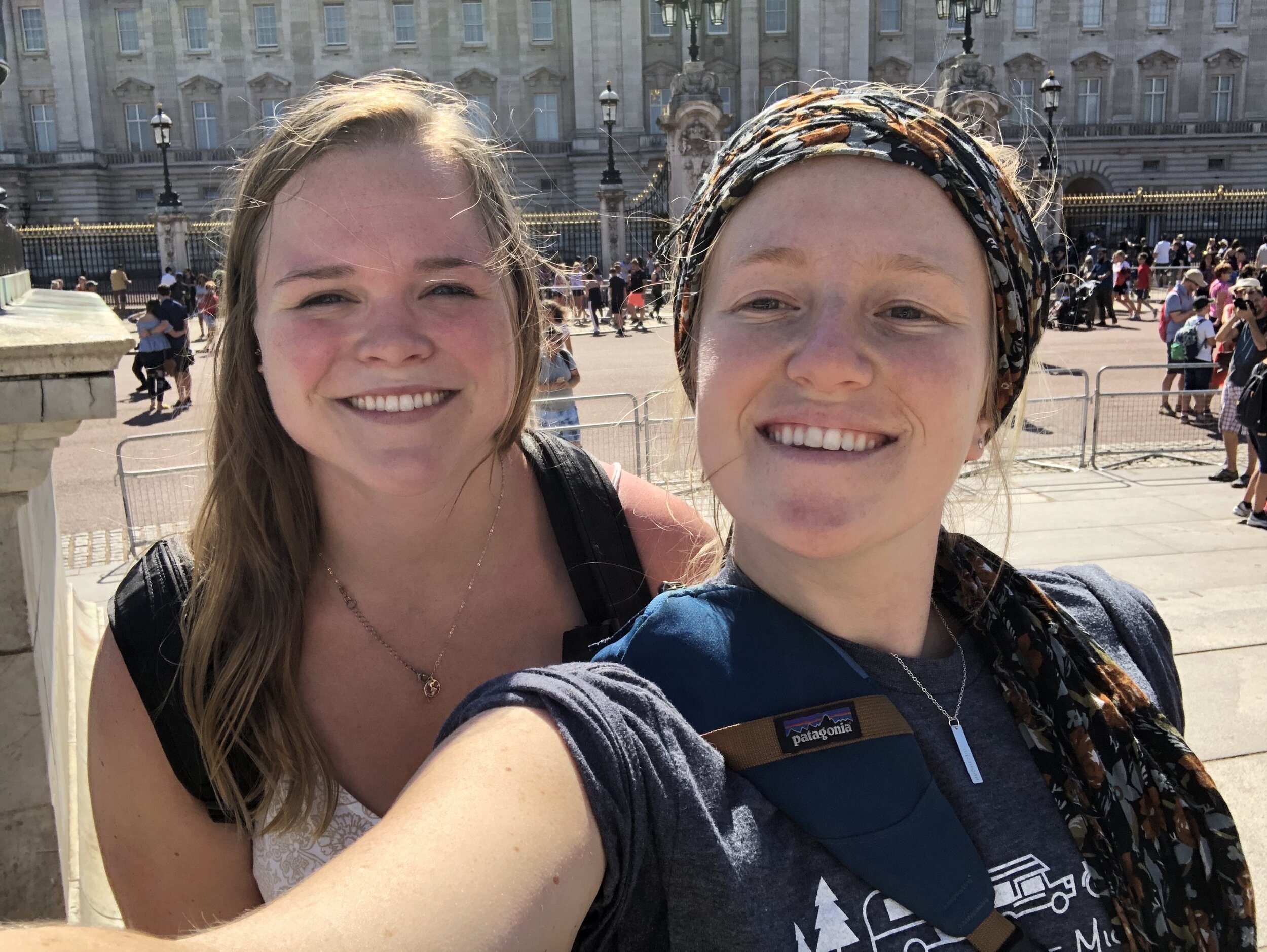
Buckingham Palace is known as the home of the Queen and is located only a few blocks from Victoria Station. Walking around it allows you to appreciate the grandeur of this Palace.
A major highlight is the changing of the guard which is a formal ceremony for when new guards replace those protecting the palace. It happens every day at 10:45 am.
Since we were quite short on time, we didn’t have the opportunity to go inside the palace. However, if visiting the palace interior is a priority for you, it is recommended to book your entry time in advance!
Stop 3: Admiralty Arch
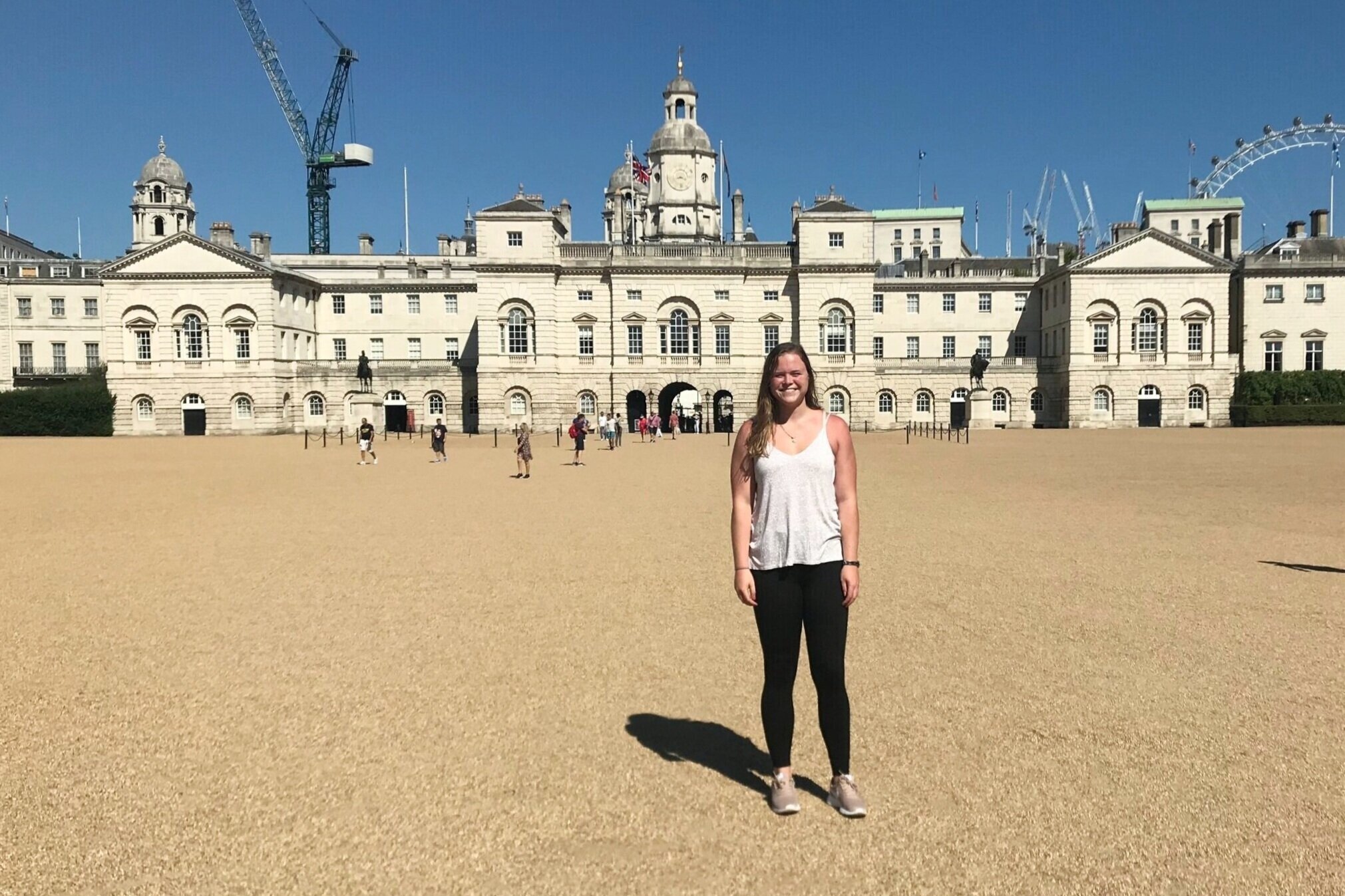
From Buckingham Palace, you can take a stroll down The Mall and through St. James’ Park. The Mall ends at the Admiralty Arch which was commissioned in honor of Queen Victoria by her son King Edward VII. Currently, it is used as the offices for the Cabinet and will soon house a Waldorf Astoria Hotel. It is also used as a ceremonial entrance for royal processions to Buckingham Palace. These processions have included royal weddings, funerals, and the opening ceremonies for the Olympic games!
Stop 4: Trafalgar Square
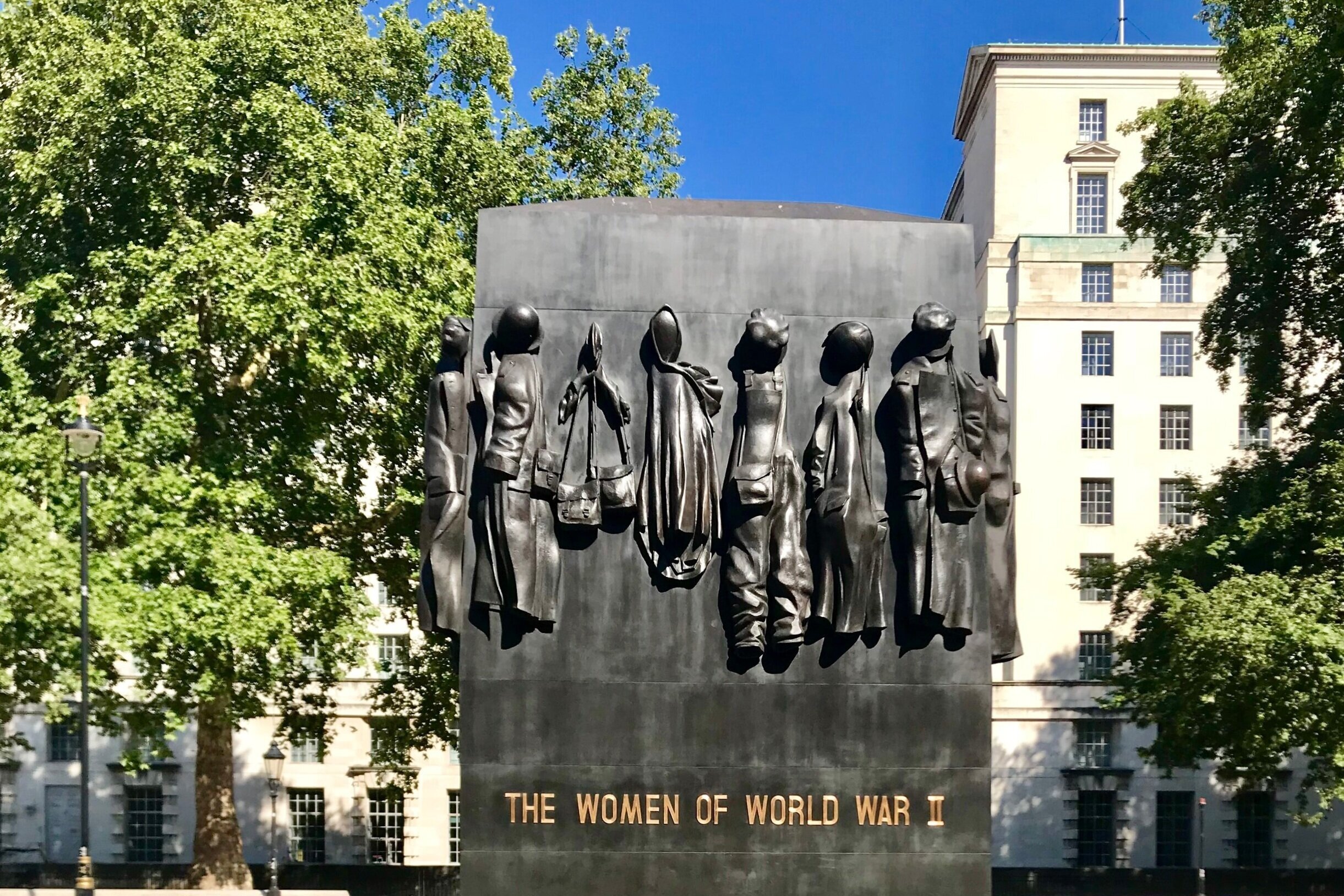
Just through the Arch is Trafalgar Square, which is often referred to as the “heart of the city”. It is one of the largest public squares in the UK and is often the center of New Year’s Eve and Christmas Celebrations. The fountains and monuments in the square are surrounded by the impressive National Gallery, St. Martin in the Fields church, and several foreign consulates.
If you continue your walk down Whitehall road you come to the Women of World War II Memorial and the Whitehall palace.
Stop 5: Parliament Square

Continue walking down Whitehall road which brings you directly into Parliament Square. Parliament square is a beautiful green space in London that holds statues of 12 influential people including Winston Churchill, Nelson Mandela, Mahatma Gandhi, and several others.
Parliament square is also surrounded by several prestigious buildings including Westminster Abbey, Middlesex Guildhall (The Supreme Court), and several other Government offices. Due to its location, It is often a prime location for all types of local protests.
Stop 6: Westminster Abbey
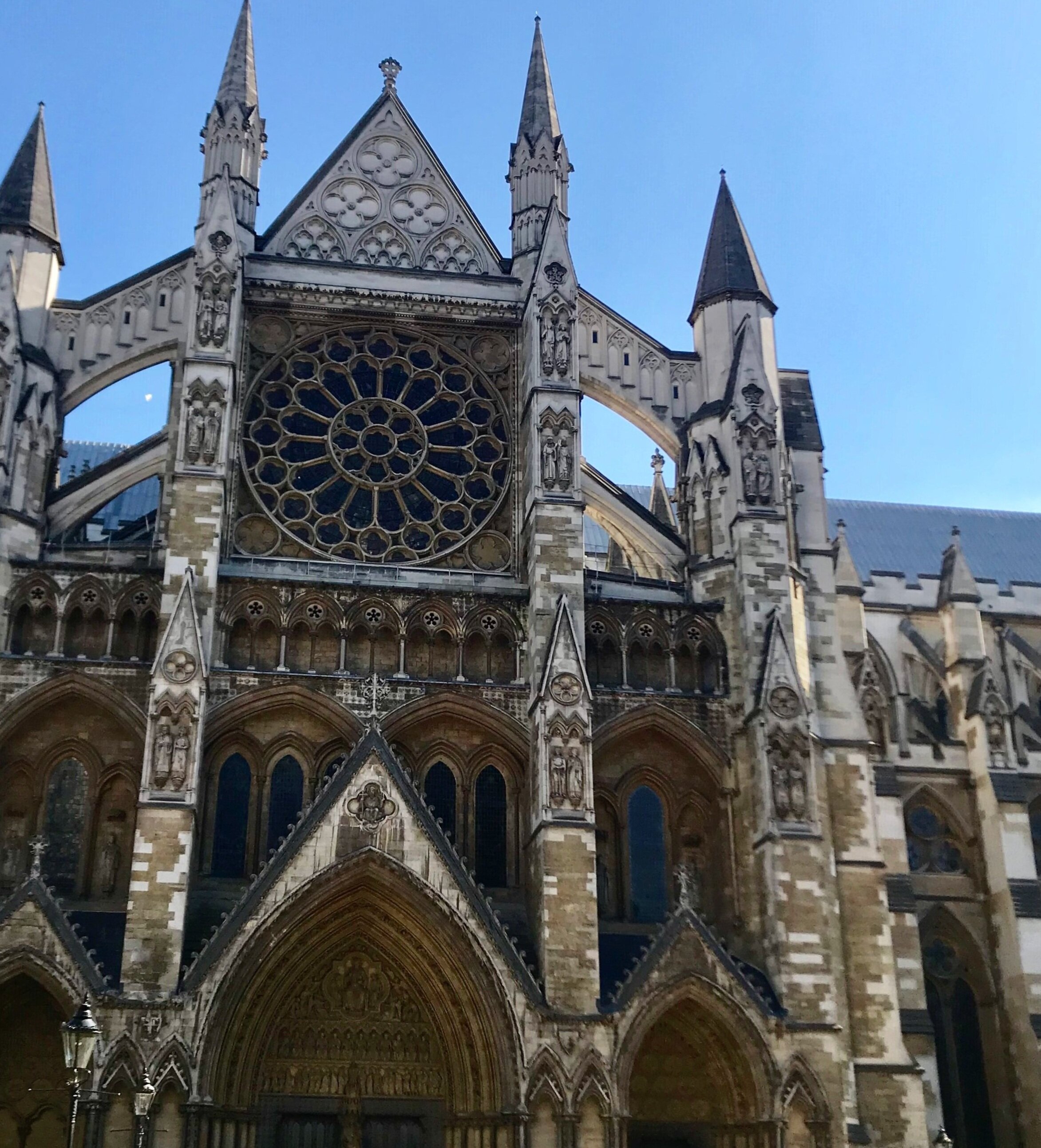
The current structure of Westminster Abbey and the Westminster Cathedral was built early in the 13th century. However, a royal abbey has stood on this site since 1066. Since its establishment, it has witnessed all aspects of English history, both positive and negative.
Westminster Abbey has hosted EVERY Royal coronation since 1066. Additionally, it has been the venue for multiple extravagant weddings, including that of Prince William and Catherine Middleton in 2011.
Along with royal weddings, it has hosted royal funerals. Including the funeral for Princess Diana. Westminster serves as the final resting place of several former Kings and Queens, as well as that of many notable figures of British society including Geoffrey Chaucer, Isaac Newton, Charles Darwin, and Stephen Hawking.
Unfortunately, Westminster has not only witnessed prosperity and fortune, but It has also witnessed some of the darkest times in British history. Like much of London, it suffered major damage in WWII and thus has undergone many improvements and restorations since.
Stop 7: Jewel Tower
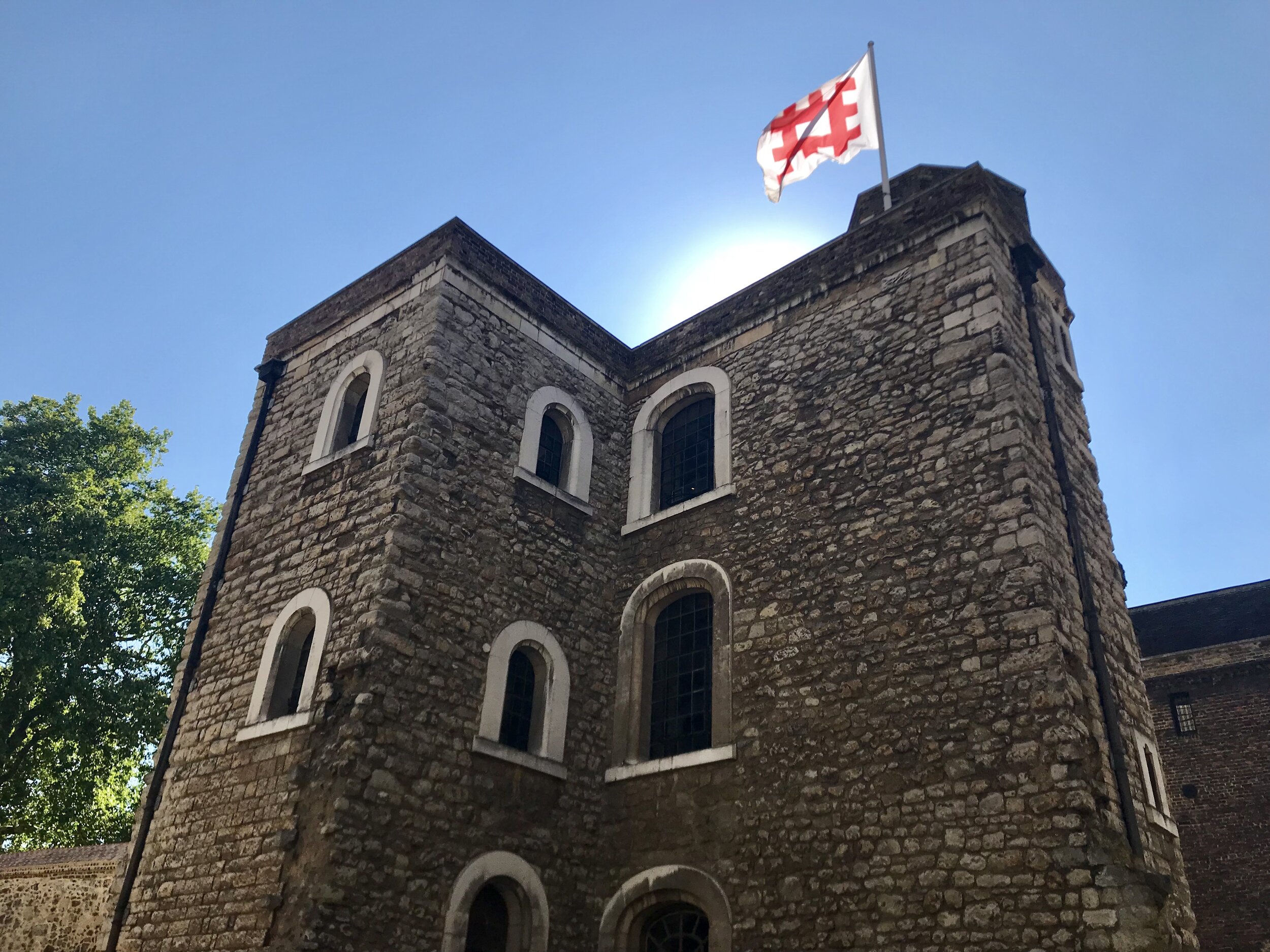
We walked around Westminster Abbey and down Great College St. towards the water. When we reached Abingdon Street we turned left. If you continue on Abingdon Street Jewel Tower will be on your left.
Jewel Tower was built in the 14th century and is an original part of the Palace of Westminster. Since its establishment, it has been used for many different purposes including storing royal treasures, important Parliament records, and currently operates as a museum and small café. This building has survived several fires, wars, and many changes in leadership, which makes it a must-see while in London.
Stop 8: The Palace of Westminster
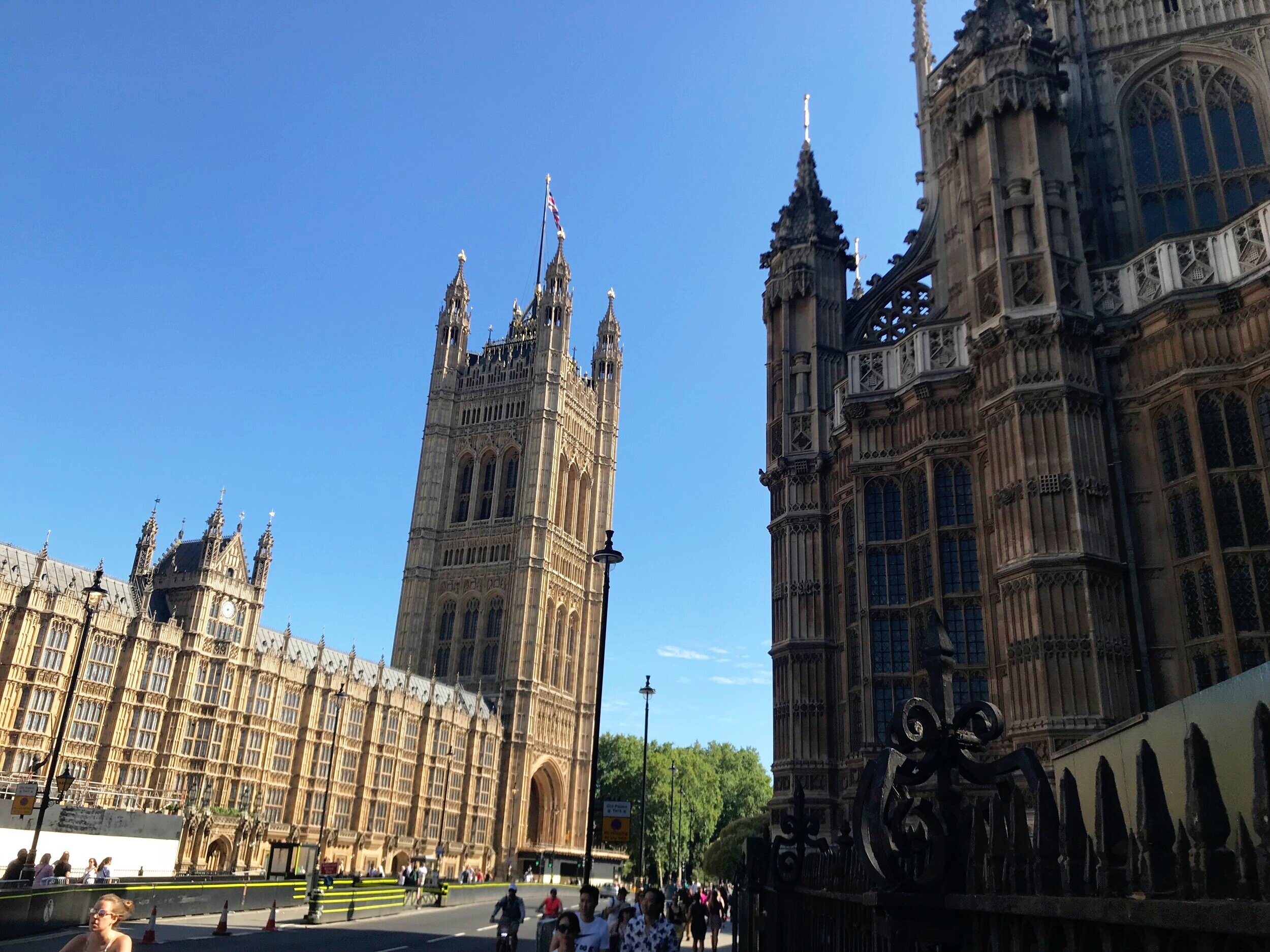
Just across Abingdon St. from Jewel Tower sits The Palace of Westminster and The Houses of Parliament. The current meeting place for the two houses of the British Parliament was built after the original house of parliament was destroyed by fire in 1834. The building that stands is called the New Palace. Much like the rest of London, it suffered great damage from airstrikes in WWII. It was hit by 14 different bombs throughout the attacks and afterward received major restorations.
Currently, it is a truly stunning symbol of the power of England. It stands on the banks of the River Thames and is a magnificent sight to see.
Stop 9: Big Ben

Arguably the most iconic part of the House of Parliament is The Elizabeth Tower which is more commonly known as Big Ben. While I was visiting Big Ben it was getting a facelift. I really didn’t get to see this famous landmark that was blocked by scaffolding. According to multiple sources, The scaffolding could be up until 2021.
At this point, we decided to cross the River Thames via the Westminster Bridge and continued by the river on The Queens Walk, which is a pedestrian-only walkway.
If you turn left onto The Queens Walkway the path will take you directly to the London Eye.
Stop 10: Millennium Bridge
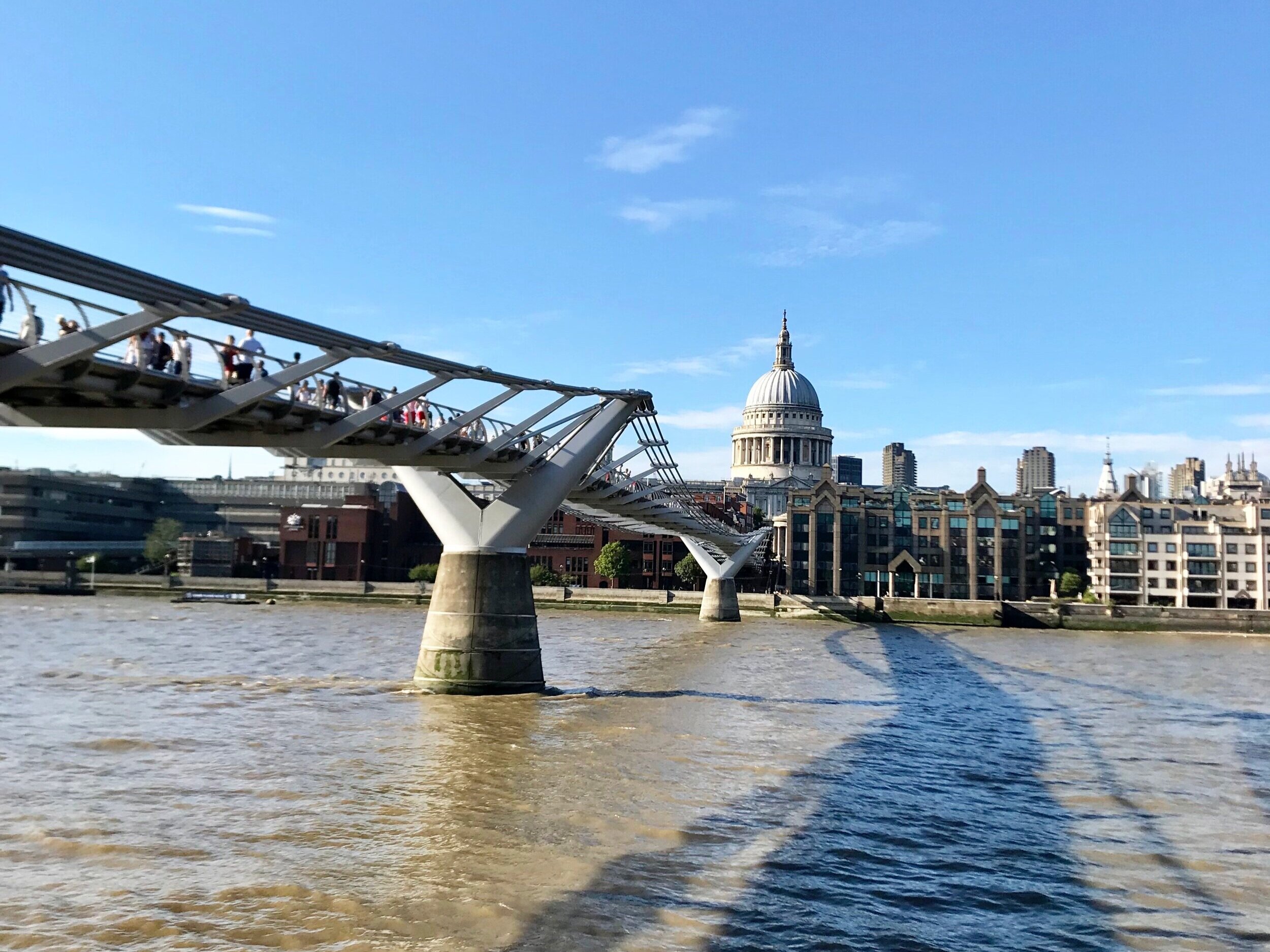
If you continue past the London Eye along The Queens Walk you will pass several ornate bridges, many cute shops, restaurants, markets, and food trucks that are set up along the river walk. One of my favorites markets was the Waterloo Book market, which is set up below the base of the Waterloo bridge.
Continue down the Queen’s Walk past two more bridges until you reach the Millennium Bridge. This Bridge directly connects the South shore of the Thames to St. Paul’s Basilica on the North bank. The Bridge was also used as a filming location for “Harry Potter”.
St. Paul’s Basilica was built after the Great Fire of London in the 17th Century and boasts one of the highest domes in the world.
Stop 11: Shakespeare’s Globe Theatre
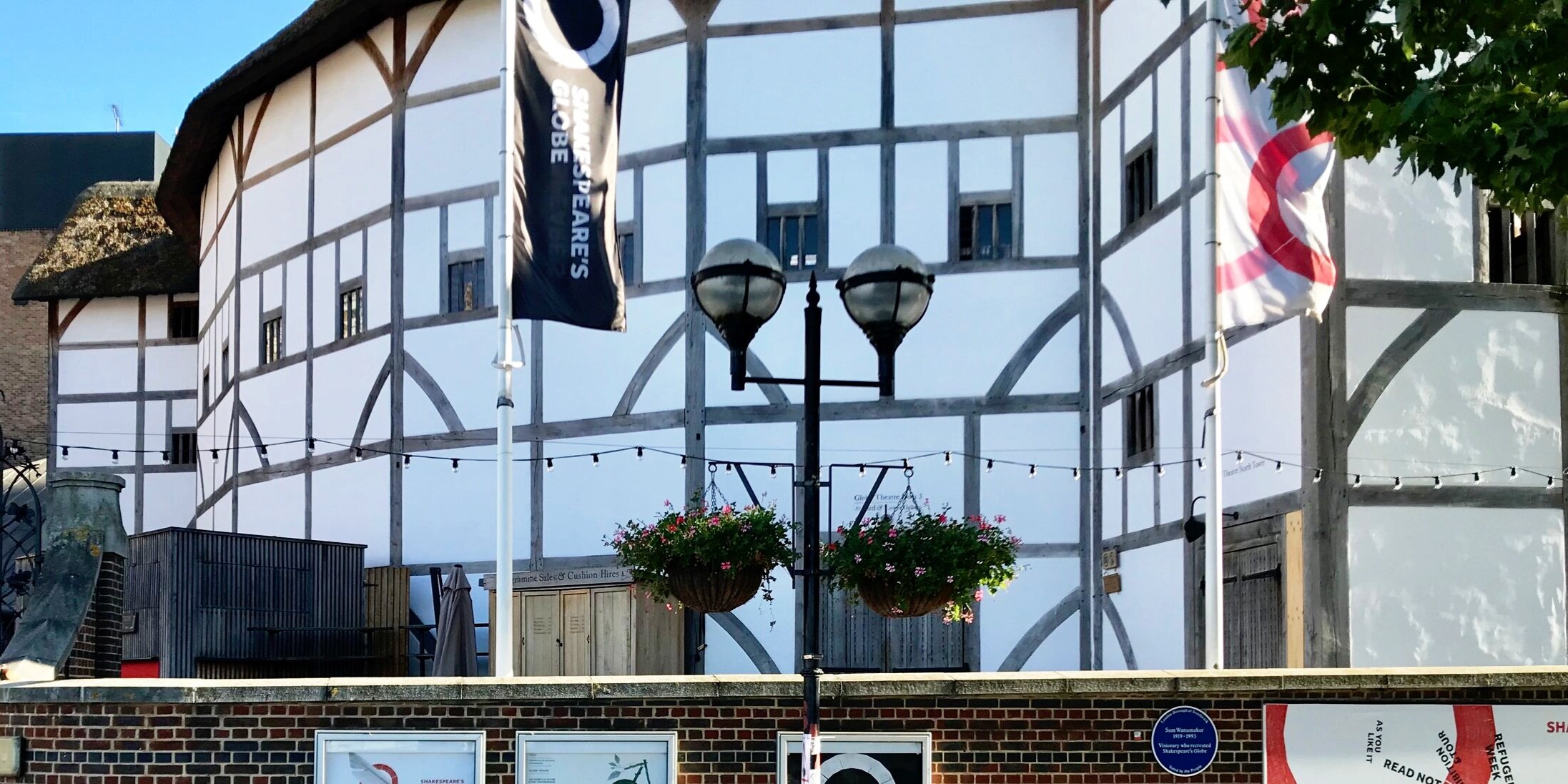
Opposite of St. Paul’s Basilica, on the South bank, sits Shakespeare’s Globe Theatre.
Shakespeare’s Globe Theatre is a reconstruction of The Globe Theatre where Shakespeare premiered his most famous works. This modern theatre is was constructed as close to the original as researchers could find in evidence. The original theatre was a casualty of a fire in 1614, and the current structure opened its doors in 1997.
Stop 12: London Bridge
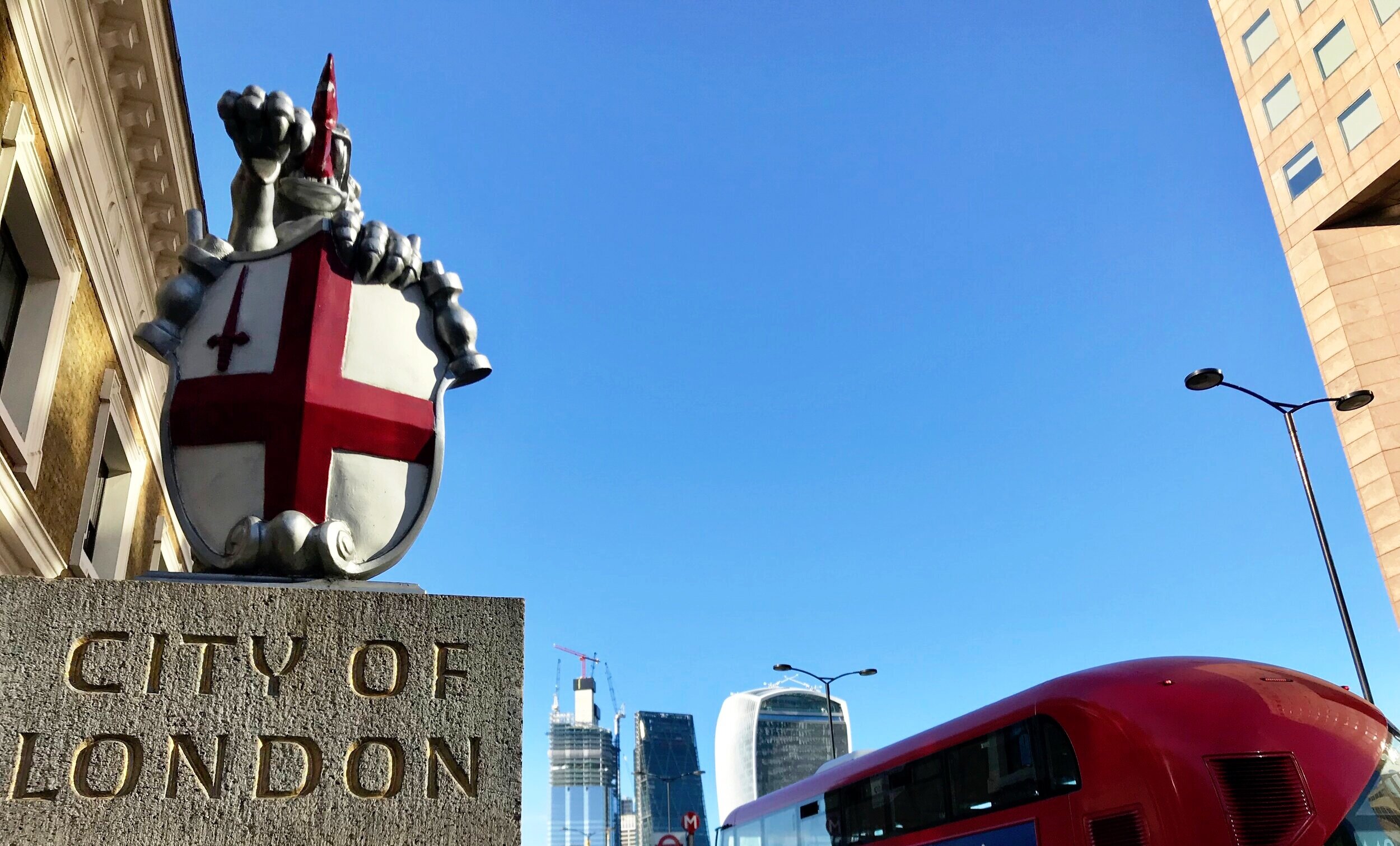
Shortly after the Globe Theatre, The Queens Walk ends and essentially turns into Bankside.
Continue to follow this road past more cute shops, restaurants, and through little tunnels until you reach the London Bridge.
This is actually not the fancy bridge with the large towers that it is commonly thought to be. Instead, the London Bridge is still quite ornate but much more plain than the iconic Tower Bridge.
Take the London Bridge to cross the River Thames, back to the North bank of the river. While crossing the bridge you get an unobstructed view of the more famous Tower Bridge!
Stop 13: Sky Garden
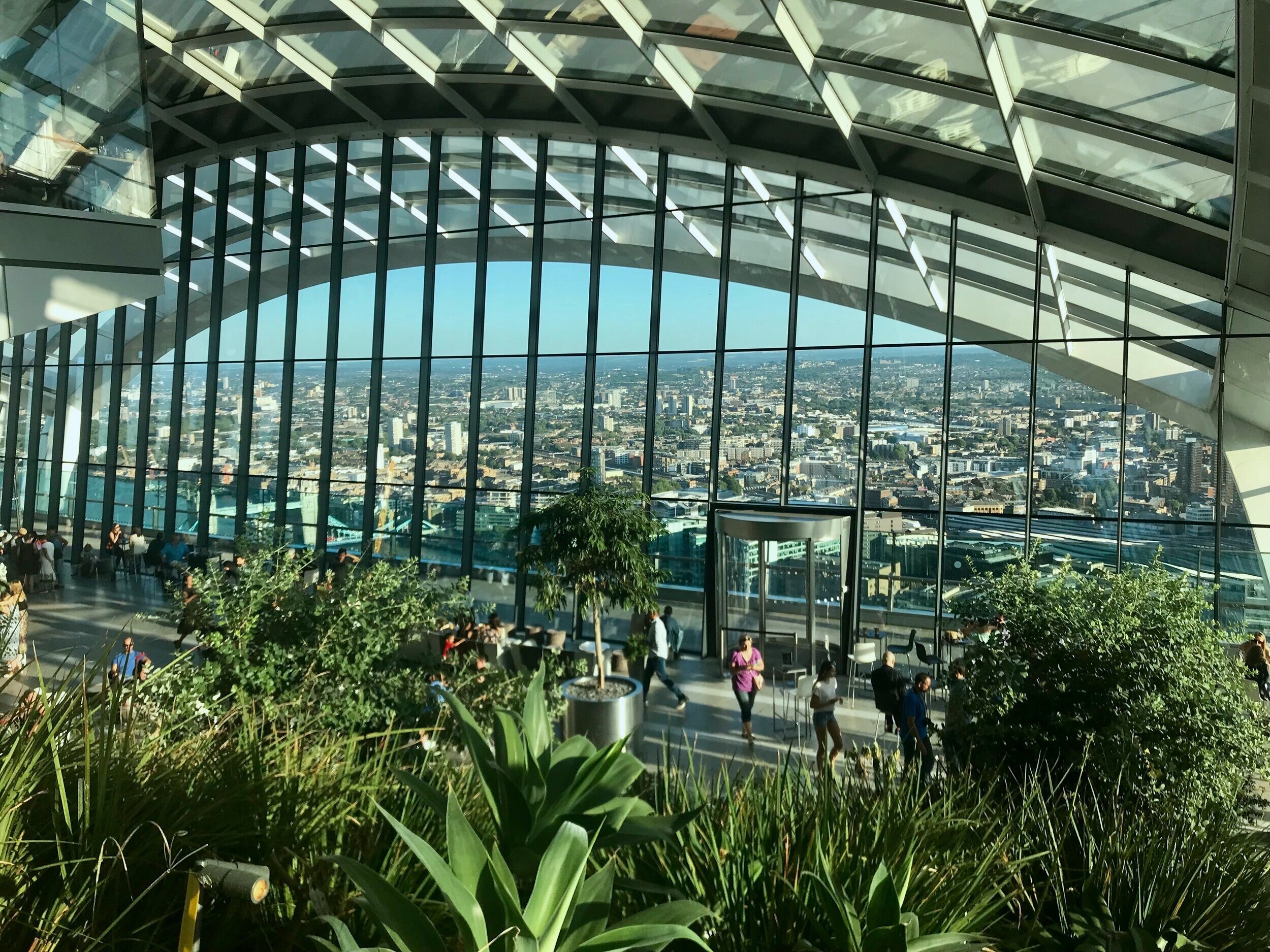
Once you’ve crossed the Thames via the London Bridge, continue walking straight until you reach the Monument Station metro stop, then turn right. This Street will lead you to a building they call The Walkie Talkie.
The Sky Garden is located at the top of this building and is host to one of the best views of London. Even better, the entry is FREE! There is a cafe and bar in the Sky Garden where you can enjoy a glass of Champagne with unbeatable views!
In order to secure a FREE spot in the Sky Garden, be sure to reserve your entry time before you arrive!
Stop 14: St. Dunstan In the East

Once you exit the Walkie Talkie building, turn left, and an immediate right onto Rood Ln. Walk a couple of blocks, and turn left onto St. Dunstan’s Ln. St. Dunstan’s Ln, dead-ends into, St. Dunstan in the East.
St. Dunstan in the East is hands down my favorite place in London and arguably my favorite place in the World. This location was formerly a magnificent Church designed by Architect Sir Christopher Wren. During WWII it was hit heavily by airstrikes, to the point where only ruins remained. After the war, instead of rebuilding, they turned the ruins of the Church into an enchanting garden with ivy draped walls and cobblestone walkways.
It is right in the hub of Central London and once you go through the gates, the noise and bustle seem to fall away. It is so unexpectedly tranquil and an absolute MUST-see while in London.
Stop 15: Tower of London
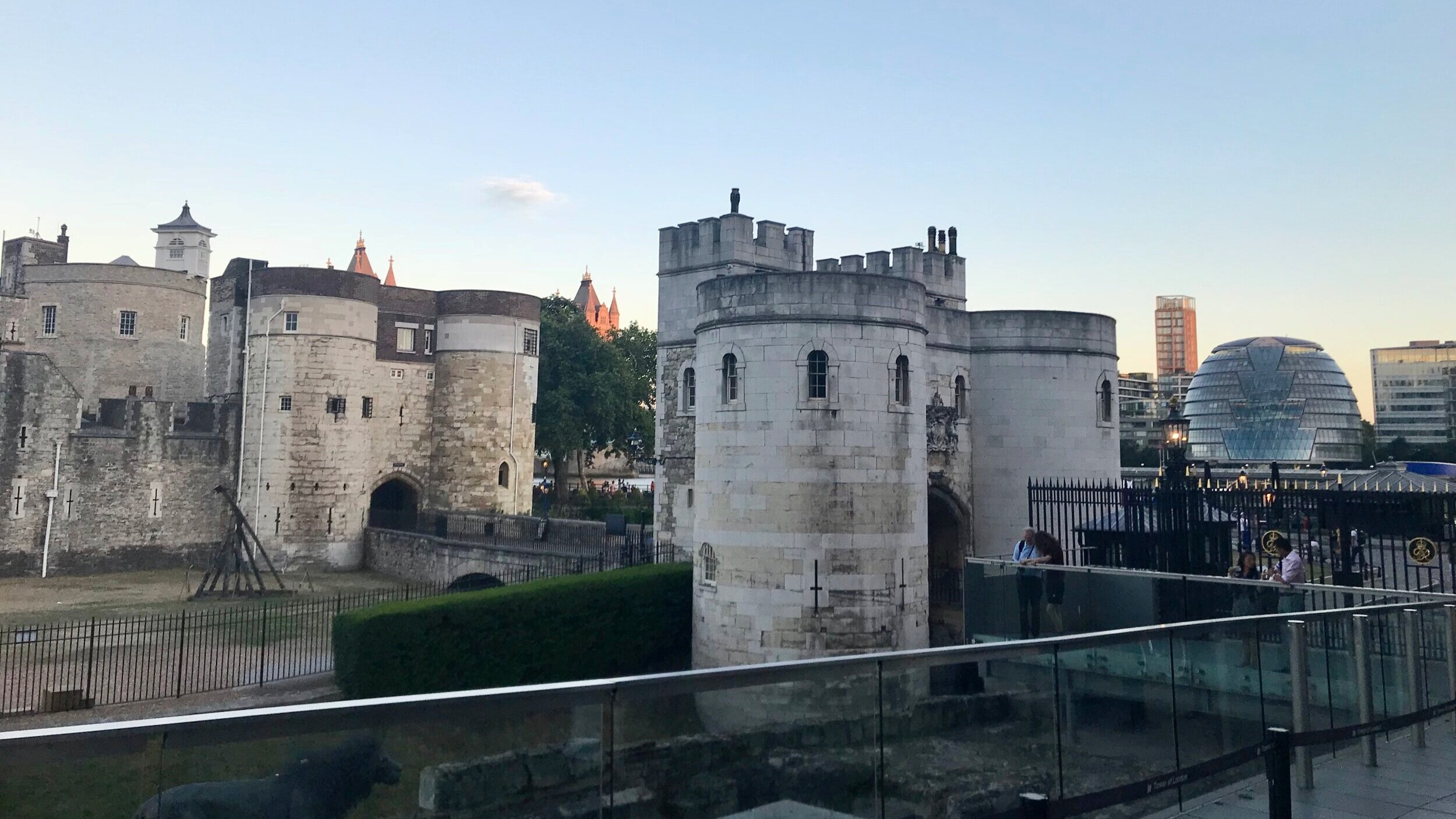
If you exit St. Dunstan in the East from the South Exit, turn left on Lower Thames Street. You will follow it all the way until you reach the Tower of London
The Tower of London is a historic castle that was founded in 1066. The castle was primarily used as a prison from 1100 until 1952 and held some of England’s most notorious criminals. Currently, it houses the Crown Jewels of England and is one of London’s most visited attractions.
Stop 16: Tower Bridge
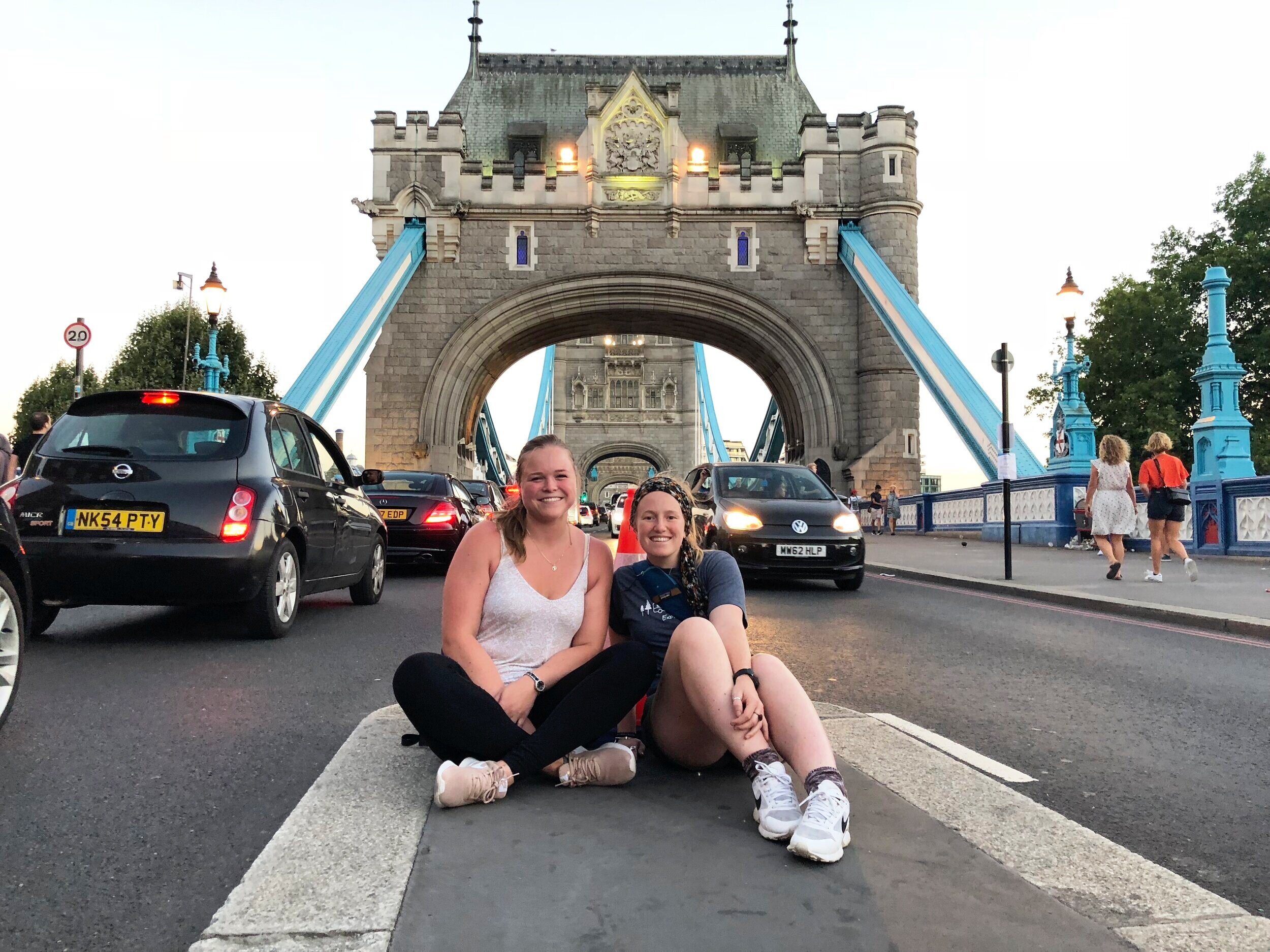
Continue past the Tower of London and walk by the water until you reach Tower Bridge.
Tower Bridge is the most recognized landmark in London and is commonly misidentified as the London Bridge. This suspension bridge was finished in 1894 and quickly became the symbol of the City. It is open to both pedestrians and motor vehicles. You can enjoy a walk across this world-famous bridge and snap lots of pics along the way!
We walked all the way across and ended once again on the South Bank of the Thames. from here we walked back along Bankside road.
Stop 17: Dinner
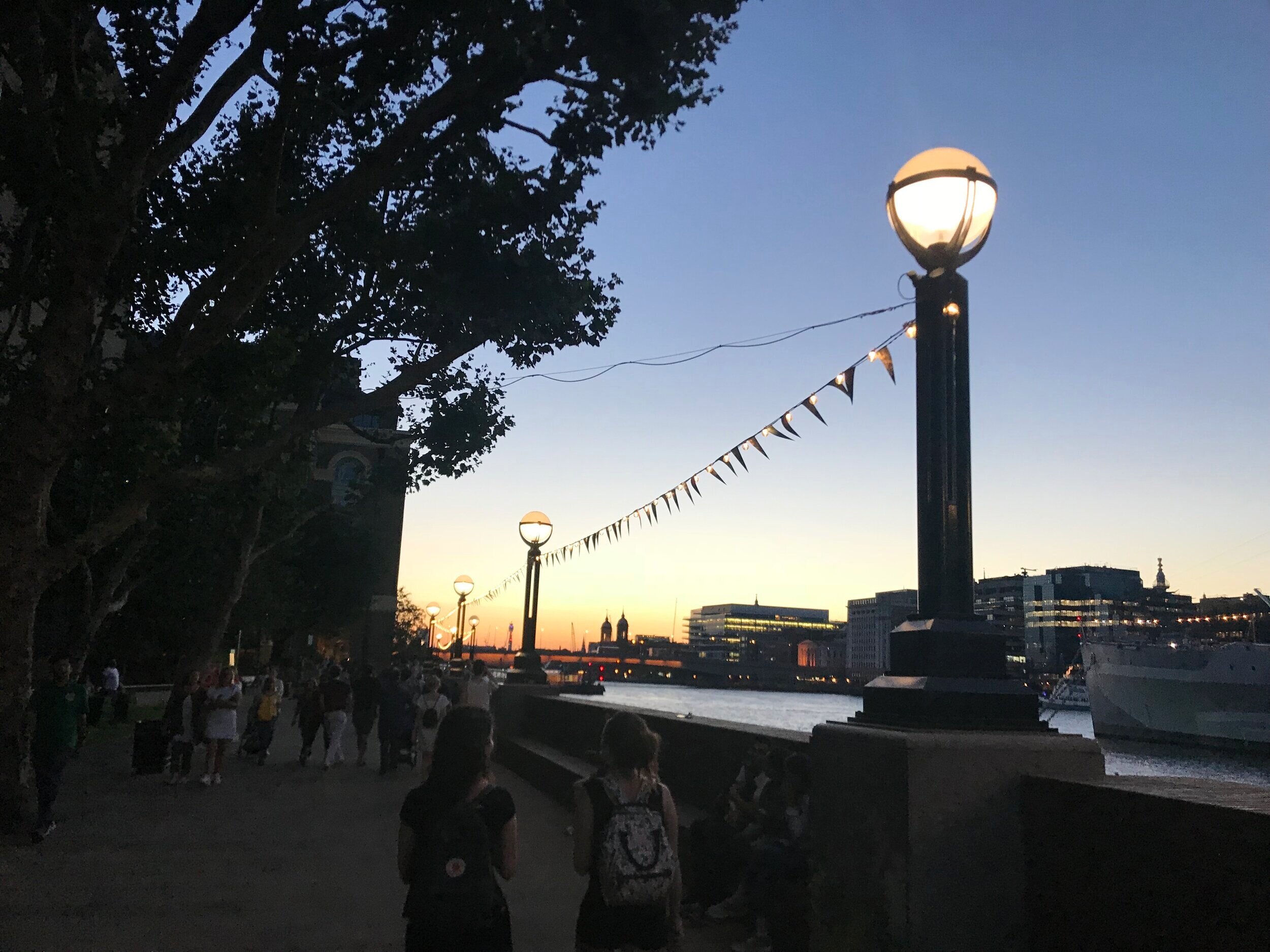
We walked along the south side of the river with hopes of eating dinner at The Borough Market. Unfortunately by the time we arrived, the market was already closed.
As a plan B, we found a nearby restaurant that WAS open! Bill’s Restaurant had a variety on the menu and we thoroughly enjoyed our Spiced Cauliflower and Butternut Squash Falafel bowls!
From here we Ubered back to collect our luggage and catch the Bus to Stansted airport.
Special Note:
In my opinion, Stansted Airport is THE WORST Airport ever, and I try to avoid it at all costs.
Their security and airport are super inefficient, so be sure to give yourself a little extra time. It is also the least convenient airport to reach from Central London. The bus takes about an hour and a half to reach the airport, so take that into consideration if you are unfortunate enough to be using this airport.
This itinerary for one day in Central London is quite jam-packed but is the perfect opportunity to get a feel for the city and see the major sights.
Alternative Options
If seeing everything isn’t your priority, or you are looking for a more informational and in-depth look in some of these areas, I highly recommend looking at either an in-person Free Walking tour with a guide or an audio tour.
- Free Walking Tour: I always book mine through Sandeman’s New Europe Tours, they have proven to be the best around!
- Audio Tour: I am a big fan of Rick Steve’s Audio Tours. With his app, “Rick Steve’s Audio Europe” you can download the audio tours, and corresponding maps to use offline. They are always concise, educational and include a few well-placed Dad jokes!
I hope you have the chance to enjoy London as much as I did, and maybe you’ll even get to see Big Ben! Cheers!
Explore more of Europe!
Wow, you packed in so much for 18 hours! London is a dream destination of mine, so I’ll have to add some of these places to my must-sees. Would also love to read more about your time in Madrid, that’s at the top of my travel list.